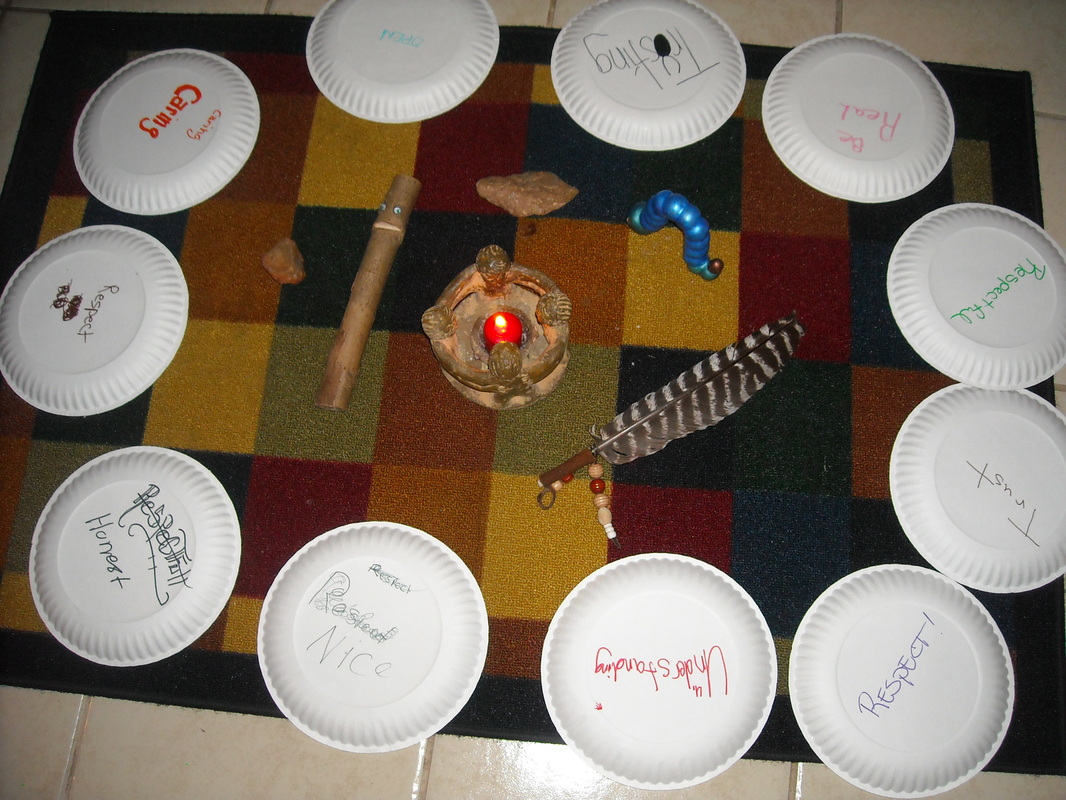Peacemaking Circle
|
Circle Practice
Key Elements of a Peacemaking Circles Process: 1. Talking piece - Allows the speaker to speak without interruption and the listeners to focus on listening without being distracted by thinking about a response. 2. Values - Shared values in relationship. 3. Guidelines - How to be together. 4. Ceremony - Opening and Closing - Recognition of time together. Role of the Circle Keeper (facilitator): The keeper is in a relationship of caring about the well-being of every member of the circle. Keepers do this as an equal participant in the circle. The keeper of the circle assists the group in creating and maintaining a collective space in which each participants feels safe to be their authentic selves and safe to speak their own truth without judgement. The keeper does not control the issues raised by the group and is not an enforcer of the group. The keepers role is to initiate a space that is respectful and safe and to engage participants in sharing responsibility for the space. The keeper is in a relationship of caring about the well-being of every member of the circle and is a participant in the circle. |
Types of Restorative Circles Celebration Circles - recognizes an individual or a group to share joy or a sense of accomplishment. Talking/Learning Circles - Participants explore a specific issue or topic from many different perspectives. Community-building Circle - Creates bonds and build relationships among a group. Circle of Understanding- Its purpose is to develop a more complete picture of the context or reason for a particular event or behavior. Healing Circle - The purpose is to share the pain of a person or persons who have experienced trauma or loss. Support Circle- Brings together key people to support a person through a particular difficulty or major change in life. Re-integration - Brings together an individual and a group or community from which that individual has been removed to rebuild connections and integrate the individual into the group or community. Conflict Circle - Brings together disputing parties to resolve differences. Resolution takes shape through a consensus agreement. Sentencing Circle - Is a community directed process, in partnership with the criminal justice system, for involving all those affected by an offense in deciding an appropriate sentencing plan which addresses the concerns of all participants. |

